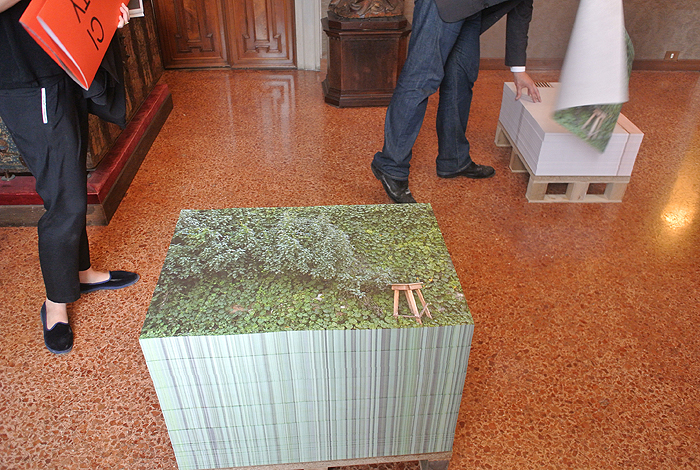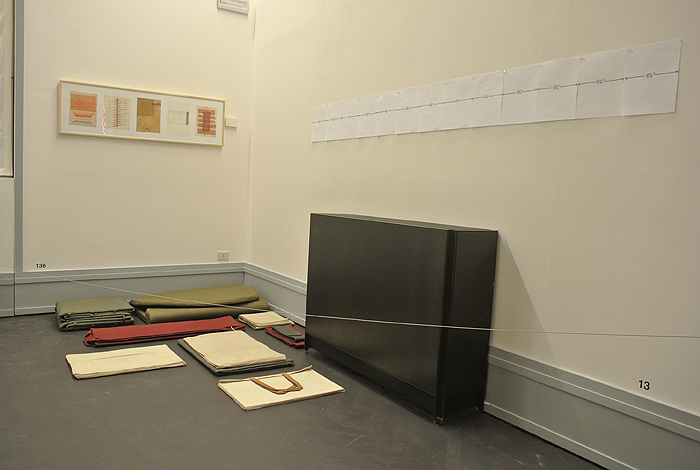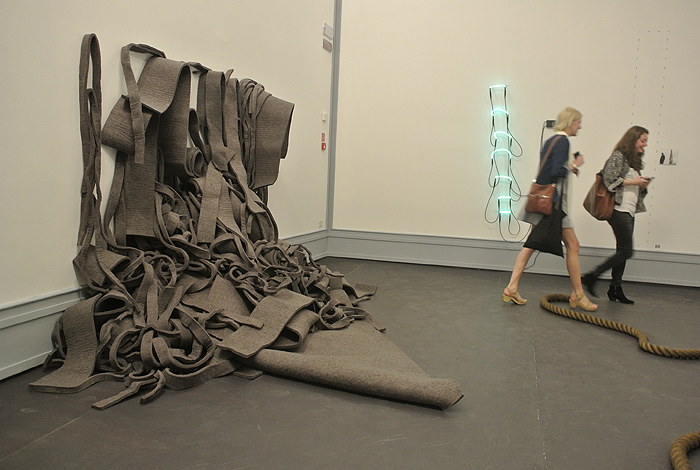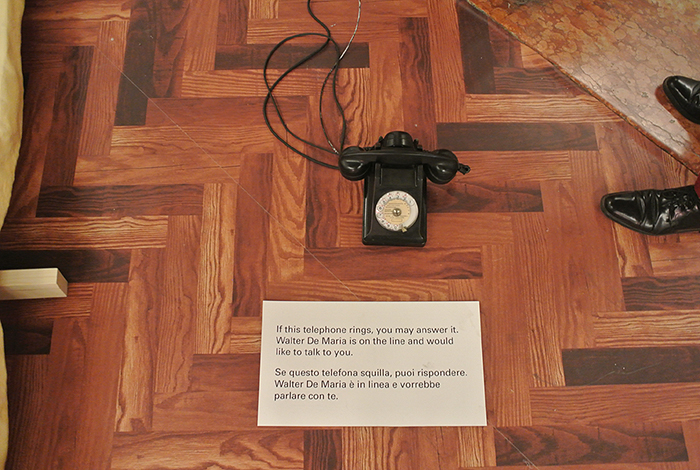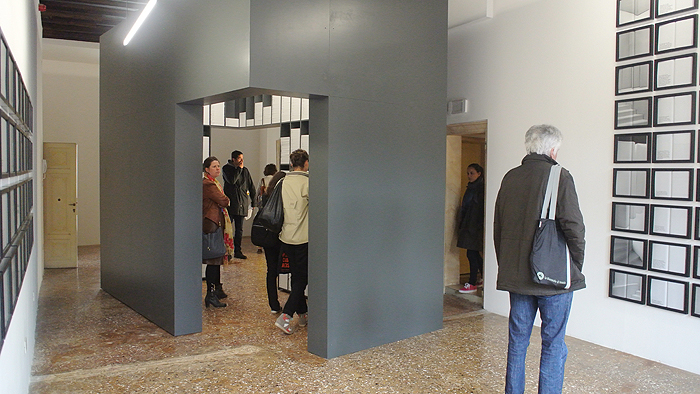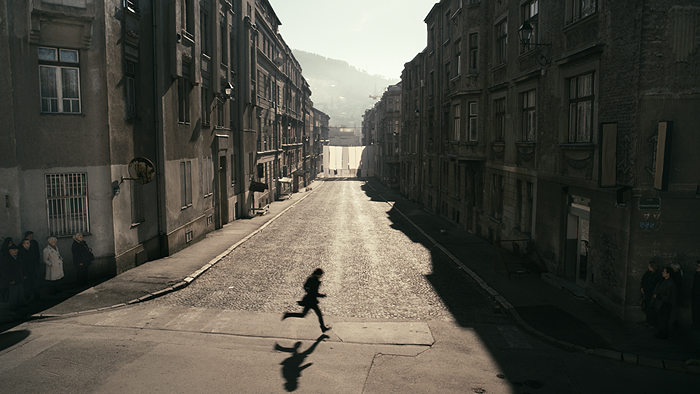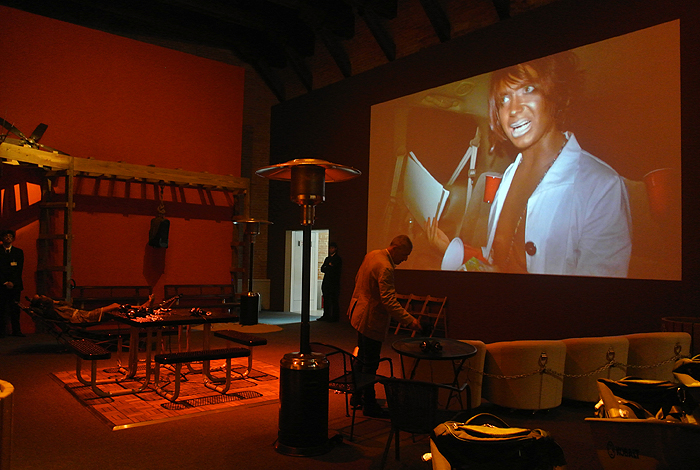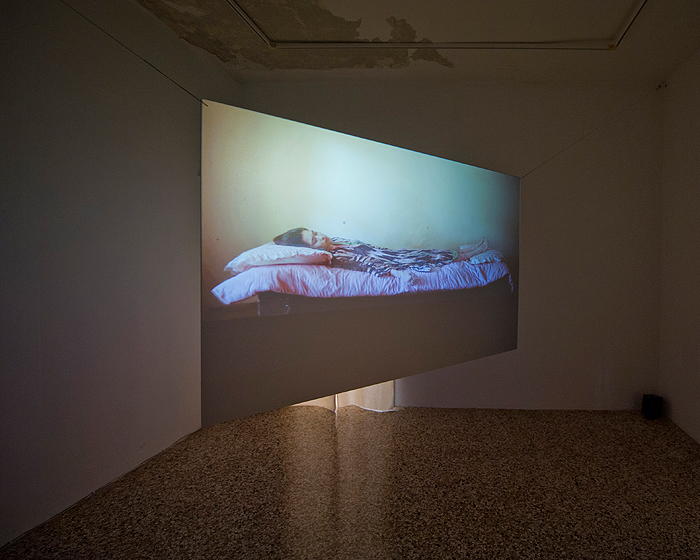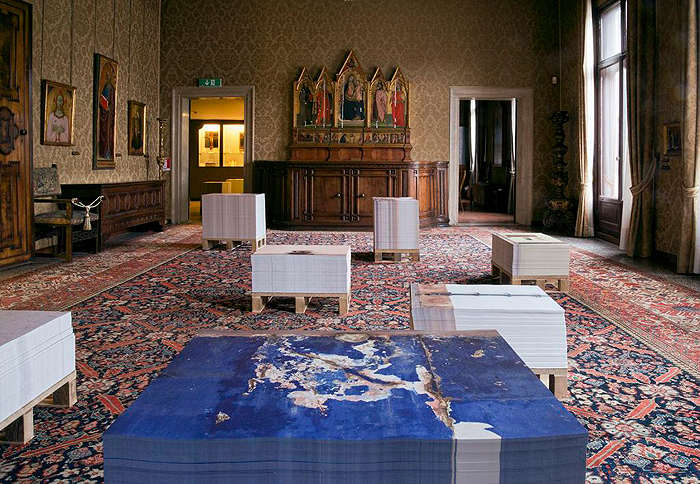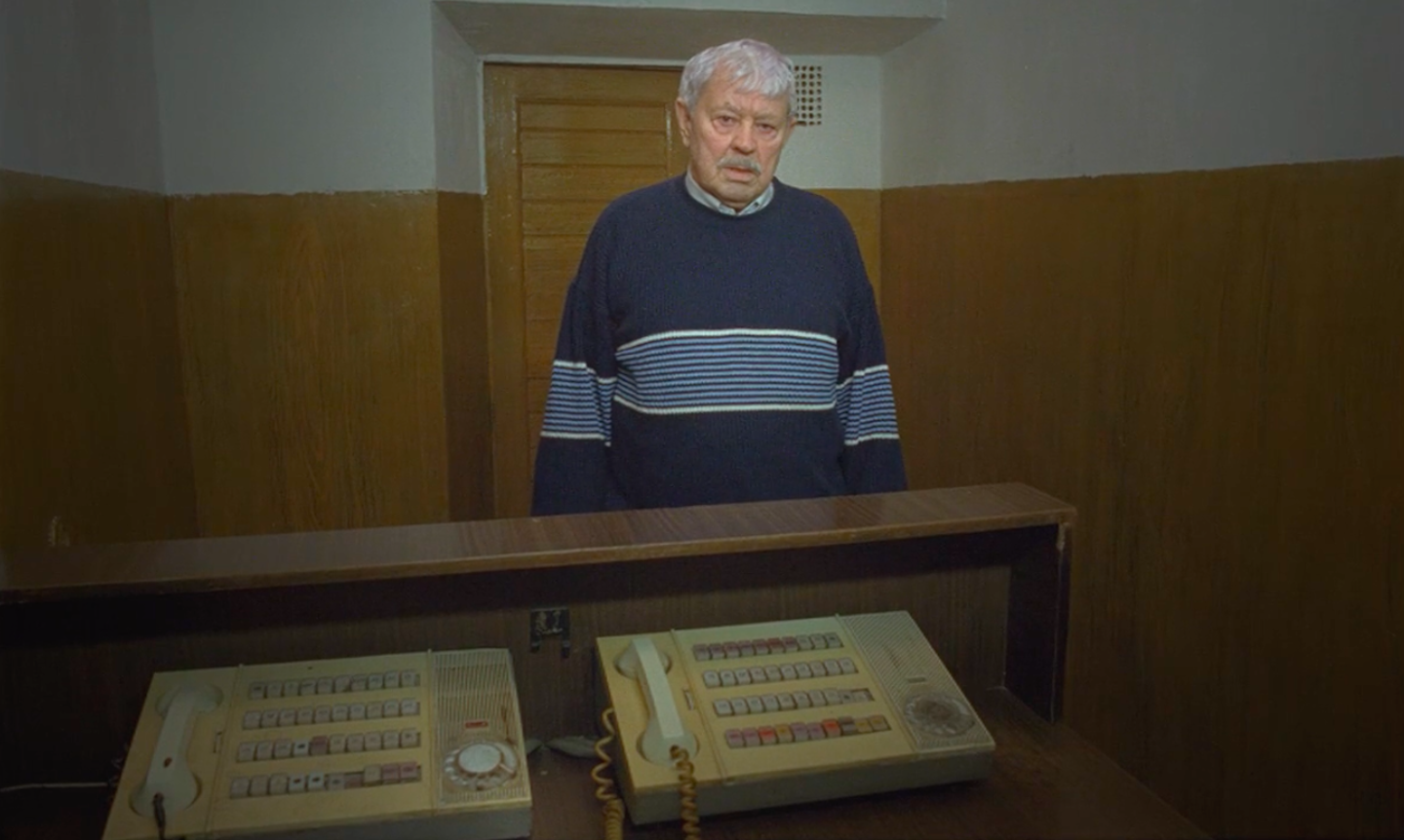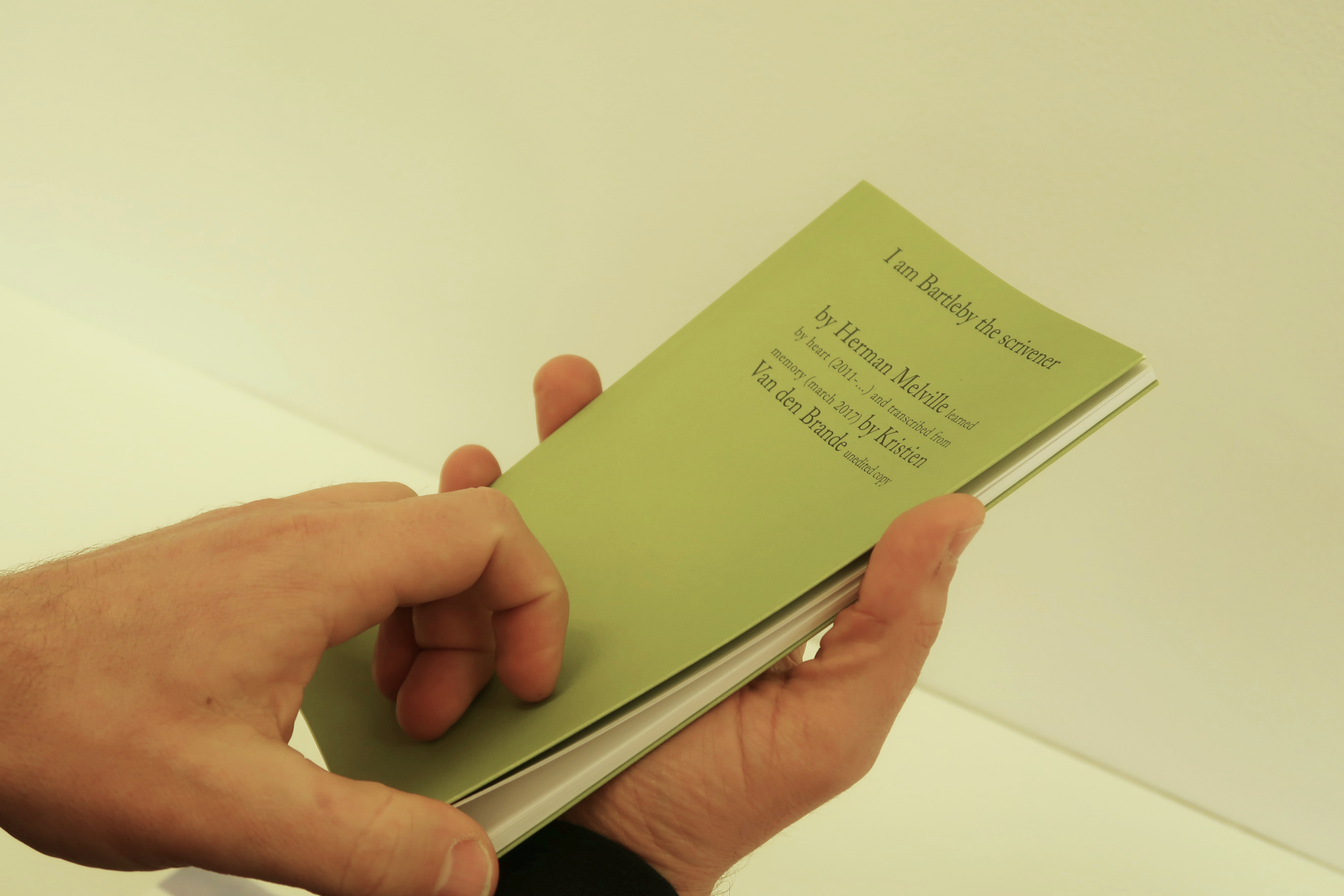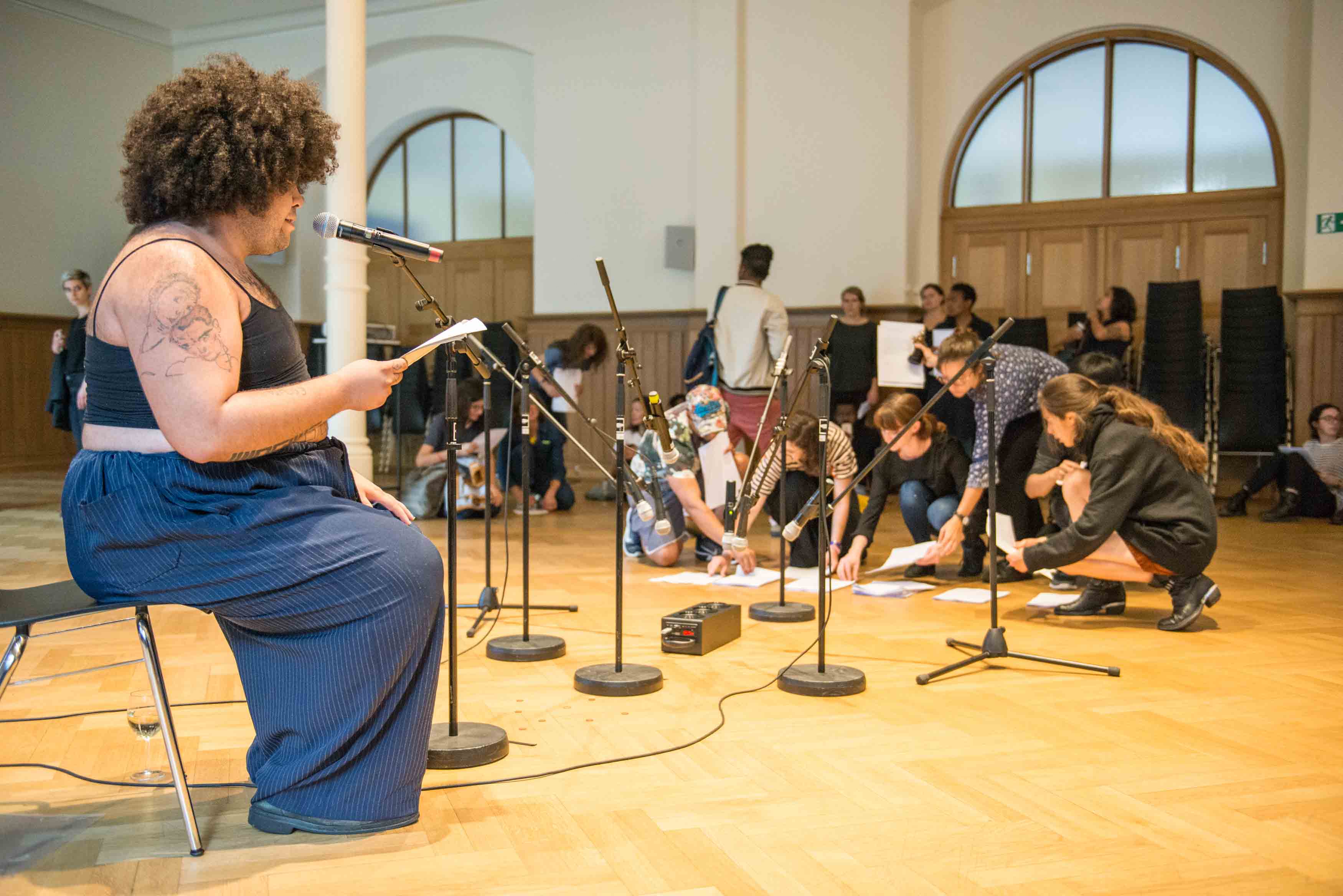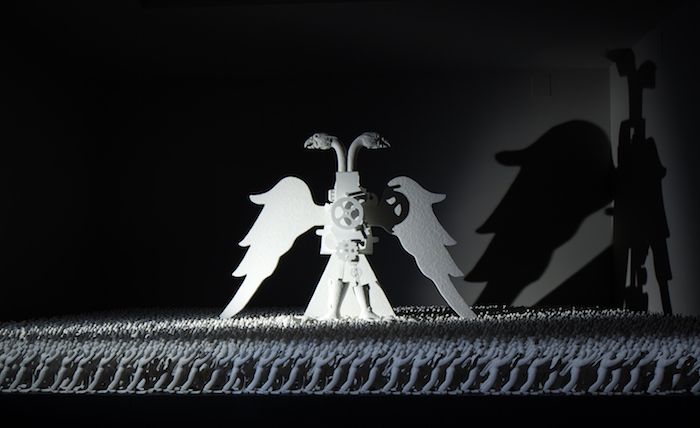June 1–November 24, 2013
The original purpose of the encyclopedia is to collect knowledge disseminated around the globe (…) and transmit it to those who will come after us, stated renowned encyclopedist Denis Diderot. Following such guidance, this overview of the Biennale outside the Biennale considers its subjects alphabetically. For if there is a vast world outside the Giardini and the Arsenale—with nearly fifty parallel projects occurring concurrently—there is also a limit to what one can see. To such an overwhelming call, we respond with a succinct short catalog of entries definitely worth considering.
A for Angola, C for Cini
How much of the Golden Lion for the best National Participation was due to Edson Chagas’s “Luanda, Encyclopedic City” and how much of it was due to the gallery of Palazzo Cini, which hosts the Angolan Pavilion? This secluded museum that lies in the heart of Venice, halfway between the Accademia and the Peggy Guggenheim Museum, is unknown to most, despite hosting an impressive collection of Renaissance artworks. Nonetheless, aren’t location, strategy, attentive display, and the capacity to dialogue with a context essential elements to producing a good pavilion (that is, a temporary palace of wonder and emotion)? Even if the works of masters such as Piero della Francesca, Filippo Lippi, Fra Angelico, Botticelli, or Pontormo did not have to make much of an effort to compete for attention with Chagas’s low pillars of takeaway posters, the whole installation generated a critical counterpoint between the utmost classical products of Western culture and economy, and the present-day streets and alleys of the capital of Angola.
The images on Chagas’s twenty-three off-set posters consisted mostly of depictions of large pieces of junk (the seat of a broken office chair, a tattered soccer ball) that were displaced and then photographed by the artist in Luanda. Visitors were invited to collect the different images, thus producing a supersized album of all the gathered prints. Despite the naïve dualism generated by the blatant contrast between the two worlds (the location of production and location of display), the project presented an almost magical and secretive discovery to its visitors that was much in harmony with Massimiliano Gioni’s exhibition’s focus on parallel and lesser-known art histories.
F for Form
Germano Celant has appropriated “When Attitudes Become Form,” and proposed the exhibition-as-readymade for the Fondazione Prada. The Venice presentation of the canonical exhibition curated in 1969 by Harald Szeemann at the Kunsthalle Bern takes Celant’s ongoing inquiry upon the possibilities of reproducibility—a line of research he has pursued since his early years as an exhibition maker—a step further, as he attempts to reproduce the unrepeatable, indeed to repeat the irreproducible.
The temporal and physical displacement of Szeemann’s show to a luxurious seventeenth-century Venetian Palazzo is highly problematic. Despite the efforts in recreating the exhibition and in turning such a historically charged building as Palazzo Ca’ Corner della Regina into a pure abstraction, the display is defective, muddled, and very confusing.
The result is a show with much form and not-so-much attitude, which grounds cultural memory in objects and not in circumstances—as if a theatrical representation conferred more importance on the mise en scène than its dramaturgy. Yet this exhibition of an exhibition is a daring venture, one which presents the opportunity to see such artworks as Walter De Maria’s Art by Telephone (1967); Eva Hesse’s Augment (1968); Jan Dibbets’s Museum-socle with Angles of 90° (1969), or Alighiero Boetti’s body as hand-molded butterflies, Me sunbathing in Turin 19 January 1969; and to access its well-presented documentation, which brings the visitor closer to the vivacity of Szeemann’s exhibition process.
M for Material Culture
The Scottish Pavilion, located in the Palazzo Pisani, surely offers one of the most solid group shows proposed by the national representations. The individual works and projects of the three Glasgow-based artists launch a triangular set of proposals that gravitate around material culture and its potential to shape personal memories (Corin Sworn), the representation of history (Duncan Campbell), or the inner value of objects (Hayley Tompkins).
In her video The Foxes (2012), Corin Sworn pursues her analysis of how the circulation of images and objects generates narratives and intertwines them with history. The starting point for her project in Venice was the rediscovery of a collection of fieldwork slides taken by her father, an anthropologist, in Peru in the 1970s. Sworn returned to the same area where the images were taken with her father, using the old photographs to explore aspects of imaging, memory, places, and oral transmission. Duncan Cambell’s film It for Others (2013) departs from Marker and Resnais’s 1953 film essay Statues also Die to pursue a meditation on the life, death, and value of objects. It includes a superb illustration of the basic principles of the exchange of commodities enacted by the Michael Clark Company. And Hayley Tompkins’s floor installation of photographs and paintings puts together different scales of familiar, commonplace scenes and objects (from the depiction of a traffic jam to an electric plug or to the proliferation of plastic bottles) in such a way that they all become part of a set of recognizable, familiar presences.
S for Silence
Whereof one cannot speak, thereof one must be silent. The last of the basic propositions of Ludwig Wittgenstein’s Tractatus Logico-Philosophicus could be an aphorism for the elegant project of the Estonian Pavilion done by Dénes Farkas, which is grounded on a series of erudite (mostly literary) references, to figures such as Maurice Blanchot, Bruce Duffy, and the aforementioned Wittgenstein.
Curated by Adam Budak, “Evident in Advance” is a complex project that offers a prismatic reflection on the ungraspable nature of language and the struggles, successes and failures of its transmissibility and of its reification. Combining photographs, sketches, archives for (and of) printed texts, a video and a living plant installation, within a sober minimal grey-toned display that was conceived by Studio Miessen, the show offers an important post-conceptualist counterpoint to the endless, obscure serializations of Gioni’s “Encyclopedic Palace.”
T for Teatrino
The reconstruction of the Teatrino of Palazzo Grassi, and its opening to the city of Venice, is a truly remarkable event for a country known for its epidemic of closing-down cinemas. The Teatrino might be better called a “Teatrone,” as it is made of a sharply finished, concrete architectural structure that feeds the ego of its archistar author Tadao Ando. But that solidity and overwhelming presence is also what assures that the teatrino is not an ephemeral operation but a place that is here to stay, promising to offer a high quality program of concerts, talks, and artists’ films and videos to the inhabitants and visitors of Venice. During the Biennale, Anri Sala’s 1395 Days Without Red (2011), Philippe Parreno’s Marilyn (2012), and Loris Gréaud’s The Snorks: A Concert for Creatures (2012) will be shown on a daily basis.
And to be even more brief: “I for Immersive” would be the category of Ryan Trecartin and Lizzie Fitch's Local Dock, Public Crop, Porch Limit (2011–2013) and its compelling soundscape created by Ashland Mines, on view at the Punta della Dogana in the “Prima Materia” show. “P for Pink” might cover Richard Mosse’s multi-screen installation The Enclave (2012) in the Irish Pavilion (at Fondaco Marcello), a depiction of rebel enclaves in the Congo with an obsolete infrared film that renders everything fuchsia; and “Z for Zukhra,” Saodat Ismailova’s poetic film portrait at the Central Asian Pavilion. Zukhra (2013)—which means Venus, but also bright and wishful in Uzbek— is a short film that combines narrative and portrait to produce an intimate approach to a woman’s view of past and present Uzbekistan.
It was that same Diderot who also sighed: what is this world of ours?... a fleeting symmetry; a momentary order‚ and so it is that, amid the spatial/cinematic reinventions and the articulations between artifacts and social relations that seem to characterize some of the most striking proposals around the Biennale‚ this encyclopedic palace is indeed an alluring warren.
